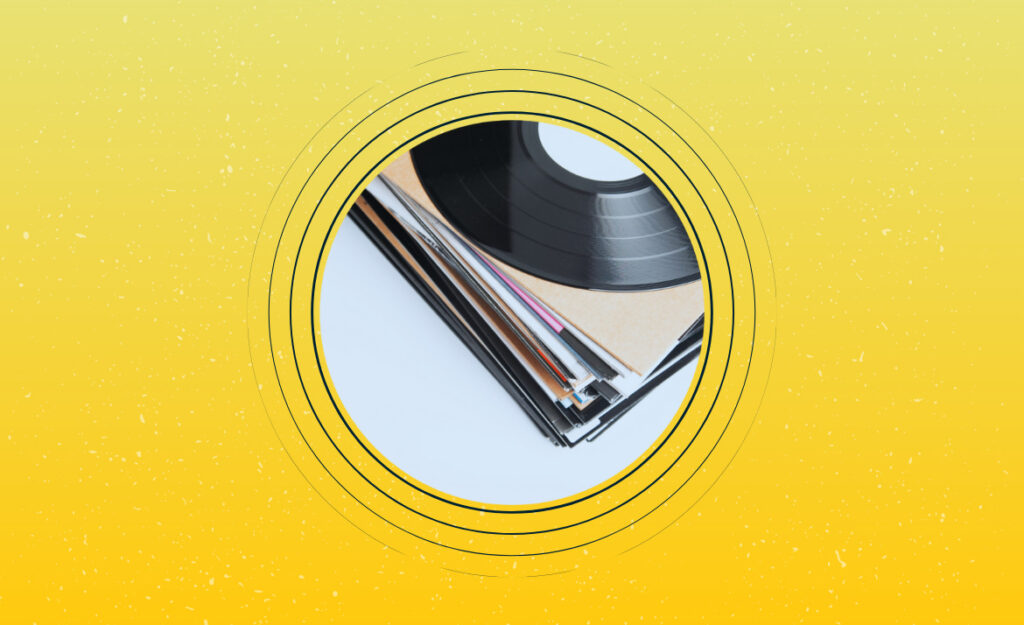
Sliding a favorite record from its sleeve and hearing that first warm note is a moment worth preserving. Keeping vinyl storage in mind turns that ritual into a lasting habit, not just a lucky break.
LPs and singles aren’t invincible. Exposure to dust, sunlight, or rough handling can cut their longevity short. Learning the essentials of vinyl storage helps collectors enjoy cleaner sound and less warping, record after record.
This article breaks down strategies and practical insights for vinyl storage tailored for passionate listeners. Discover how simple habits, specific tools, and intentional storage choices all contribute to the safer, longer lifespan of your collection.
Choosing Shelving That Prevents Damage and Deformation
Investing in sturdy, purpose-built shelving keeps vinyl records protected. Right shelving holds your albums upright, promotes airflow, and minimizes tilt, protecting both jackets and grooves.
Select shelves deep enough for outer sleeves and high enough so LPs don’t stick out. This means less chance of accidental bending or dropped records during browsing sessions.
Maintaining Vertical Alignment for Record Safety
Vinyl storage works best when your records are kept vertical, not leaning or lying flat. This limits pressure and avoids groove warping, giving every play a chance to sound its best without damage accumulating over time.
If you see albums slanting, add bookends to keep them tightly grouped. Roomy shelves are tempting for fast stacking, but avoid creating lopsided pressure that can permanently warp the discs in your collection.
For every shelf, run your hand along the fronts. Records should stand straight and tight, but not wedged together. Gently adjust until albums form a neat line, always upright and ready to spin.
Ensuring Stable Support Using Real-Life Arrangements
A collector might say, “I used to pile albums anywhere space popped up, but my records started warping.” Getting durable, level shelves changes that story – a stable surface means your collection stays safe, year after year.
Choose wood or metal shelving with enough thickness to support the weight, and avoid bowed or flimsy shelves that subtly curve under pressure. Every shelf should rest flat and secure, with no visible droop between supports.
If your collection grows, add extra shelving supports every 18–24 inches. Walk by and check for sag, especially as you add more records. Solid support lets vinyl storage do its protective work all season long.
| Shelving Type | Material | Weight Limit | What to Do Next |
|---|---|---|---|
| IKEA Kallax-style | Particleboard | Approx. 30 lbs/cube | Check for even feet and add shelf liners. |
| Custom Wood Rack | Plywood/Hardwood | 60–100 lbs | Install wall brackets for more support. |
| Steel Wire Shelving | Metal | 100 lbs/shelf | Add edge guards to prevent slips. |
| Plastic Cube System | High-density plastic | 25 lbs/cube | Limit the number of records per compartment. |
| Vintage Bookcases | MDF/Composite | 40 lbs/shelf | Secure to the wall and check for sagging yearly. |
Controlling Dust for Cleaner Listening and Storage Longevity
Keeping dust at bay extends vinyl storage life. Dust particles grind into grooves and can leave gritty noise or scratch marks if not addressed regularly.
Store your records in sleeves when they’re not spinning, and use an anti-static brush before and after every play. Small, routine actions keep your records sounding clean much longer.
Using Sleeves to Block Airborne Dust and Debris
Slip each record into an inner sleeve before returning it to the jacket, then add an outer sleeve for more protection. Both layers help defend against everyday dust, fingerprints, and accidental spills.
- Choose polyethylene inner sleeves for anti-static protection. Don’t reuse paper sleeves if they feel rough or dusty; replace with new ones for safer storage.
- Insert LPs with the opening upward and the jacket opening to the side. This prevents dust from falling directly inside, a small tweak that makes a difference.
- If you live in a high-humidity area, try rice paper sleeves. They ward off moisture better than plain paper and keep records cleaner underneath the jacket.
- Stack only sleeved records on shelves. Direct contact between bare jackets increases dust transfer and adds to handling wear – sleeved records act as their own barrier.
- Wipe outer sleeves occasionally with a microfiber cloth. This removes static and stray particles, preventing those invisible bits from accumulating over months of shelf time.
Replacing sleeves is a worthwhile maintenance habit. Even one dirty or torn sleeve can shorten a record’s lifespan.
Minimizing Exposure to Dust from Other Sources
Place your vinyl storage away from windows or air vents, which blow dust directly onto records. Location matters just as much as cleaning habits for long-term results.
- Avoid stacking gear on top of shelves; electronic equipment like speakers and amps generate static that draws dust toward vinyl storage.
- Use storage cabinets with doors, especially for collections in basements or near entryways. Doors block direct dust exposure and reduce the need for cleaning.
- Dust shelves weekly using a soft, damp cloth before reshelving records. Start at the top and work down to capture all particles, rather than spreading them around.
- If your room is carpeted, vacuum frequently. Carpets throw more dust into the air, settling quietly onto any exposed records unless cleaned regularly.
- Limit open shelving to rooms with good air filtering. If you’re committed to visible storage, consider adding a room air purifier nearby to further safeguard your vinyl storage.
Every effort to limit airborne dust pays off later, preserving both records and sleeves well beyond their first play.
Managing Light and Temperature for Warping Prevention
Shielding your vinyl collection from sunlight and heat fluctuations stops warping before it starts. Both elements cause record grooves and jackets to age faster and distort beyond repair.
Stable, cool, and shaded conditions are essential. Treat your records like fine wine: too much light or unpredictable temperatures ages them quickly and unpredictably.
Blocking Direct Sunlight with Strategic Placement
Move shelves away from sunny windows, even if the spot looks appealing. Sunlight raises surface temperatures and introduces UV rays that make both vinyl and jackets brittle or discolored.
If you want to showcase favorites, use UV-blocking glass display frames. This gives visual impact without putting the same records at risk day after day.
Try blackout curtains in bright rooms or reposition lamps to shine away from shelves. Soft, indirect light keeps records readable and safe year-round, preserving covers and grooves together.
Balancing Humidity and Temperature in Everyday Use
Monitor the room where you store your vinyl, not just the wider house climate. Basements might stay cool but carry hidden humidity; attics fluctuate rapidly between hot and cold throughout seasons.
Use a simple hygrometer and thermometer to check for conditions between 60-70°F and 40-50% humidity. Small, affordable dehumidifiers prevent mold, while fans circulate air for even cooling.
If you notice jackets feeling damp or warping from heat, relocate your collection to a room with better climate control. Invest in storage solutions that adapt as your living space shifts with the seasons.
Handling Vinyl With Care From Shelf to Turntable
Every time you move a record, you shape its lifespan. Handle each LP by the edges and label to limit fingerprint oils, tiny scratches, or accidental slips.
Creating a mindful routine keeps vinyl storage safer. In a busy home, pause before grabbing records during distractions to avoid mis-steps.
Procedural Handling That Lowers Accident Risks
Build habits around gentle handling as you remove a record: slide it partway from the sleeve, then grip it firmly by the sides with clean hands before removing fully.
Set up a padded workspace or soft mat for prep and cleaning—never put records on hard tables, even for a moment. Have everything ready before you start playing or cleaning to limit unnecessary handling.
Once done, return records to sleeves promptly. Laying LPs out increases risk; routine re-sleeving keeps your entire vinyl storage horizon more reliable, night after night.
Cleaning Steps That Integrate With Handling
Dry-brush each record before and after play. Use gentle, sweeping motions from center label to outer edge. This removes dust before stylus contact, keeping both grooves and playback quality alive longer.
Wet-clean monthly using a record-safe solution. Let the record drip-dry upright or on a dedicated rack, not towels that might leave fibers behind. Integrate this step naturally into weekly or monthly vinyl storage routines for best effect.
Don’t forget to wipe the outer and inner sleeves as well. Handling clean records plus clean sleeves forms a strong defense against dirt or mold sneaking in over time.
Optimizing Space and Accessibility Without Sacrificing Vinyl Safety
Smart space planning ensures you can grow your collection without risky shortcuts. Modular shelving units fit any room shape and adapt as your vinyl storage needs change.
Prioritize frequently played albums at eye or waist level for easier browsing. Bending or stretching to reach records increases chances of bumping, dropping, or tilting stacks.
- Divide your collection by genre or decade and keep heavier box sets on the bottom shelf. Lighter, less valuable albums go higher up, lowering tipping hazards.
- Add labels to shelves or spine stickers to jackets for quicker identification. Reduced searching means less handling and less risk.
- Consider drawer-style storage for singles. Sliding panels minimize squeezing or pulling on delicate sleeves compared to close-packed vertical shelves.
- Install shelf dividers for every 12–15 albums. These prevent side-slipping and keep your rows standing straight no matter how many you add or remove.
- Leave at least an inch of clearance above the tallest record so jackets don’t bend when sliding in or out. Small gaps may seem trivial but are crucial for vinyl storage consistency.
Space-conscious planning doesn’t have to mean cramming every inch. Organized accessibility ensures you’ll play and maintain each record longer, not just keep it safe.
Storing Boxed Sets, Picture Discs, and Unique Formats Safely
Unusual formats require extra attention in vinyl storage routines. Boxed sets, picture discs, or colored vinyl often use fragile sleeves or constructions that can suffer in regular shelving.
Place large box sets flat on shelves, never stacked too high, to prevent the bottom boxes from crushing underweight. For odd shapes, look for archival boxes or make custom dividers.
Special Handling for Collectible and Vintage Items
Double-sleeve picture discs to avoid scratches on printed surfaces, and store in cool, dark areas. Colored vinyl sometimes reacts with PVC sleeves, so check compatibility or use lined, acid-free options.
For autographed jackets, avoid direct touch. Use top-loading sleeves and position these records where they won’t be squeezed during shifting. A careful approach keeps signatures and unique elements intact with everyday access.
If you have box sets with bonus items, keep extras in labeled envelopes inside the box. This keeps everything together while limiting friction, bending, and disappearance as collections grow.
Preventing Warping and Discoloration in Tricky Cases
Any time a record sleeve doesn’t fit normal shelves, make a quick sketch with measurements. Use a local hardware store to cut custom foam or cardboard separators, protecting fragile spots until you expand your shelving further.
For long-term display, rotate unique items on and off the shelf every few months. This avoids constant sun or heat on a single record, spreading out environmental stress over time.
If you notice discs or sleeves starting to curve, move them into a flat, climate-controlled box immediately. Even temporary re-stacking can prevent permanent warping while you repair or upgrade storage furniture.
Building Consistent Routines for Lasting Results
Making vinyl storage safe isn’t a one-time action. Ongoing habits matter more than any single fix. Integrate quick, regular checks into your music enjoyment for a collection that evolves and lasts.
Schedule monthly shelf inspections for vertical alignment, sleeve condition, and any outside threats like leaking pipes or new sunlight sources. This minute-long walkthrough catches issues before records pay the price.
Small Habits That Multiply Over Years
Every “extra minute” spent re-sleeving, dusting, or re-shelving multiplies the lifespan of your vinyl storage. A little vigilance—wiping records as you browse or double-checking shelf stability—pays off dramatically over years of consistent enjoyment.
Group with friends, housemates, or family on inspection days for bigger collections. Assign sections or set a timer. Shared tasks often stick better, especially when everyone benefits from the clean sound and good looks of well-kept vinyl.
Don’t forget to celebrate your organized shelves by playing a favorite or spinning a new discovery. Enjoyment stays high when care routines are built right into listening moments.



